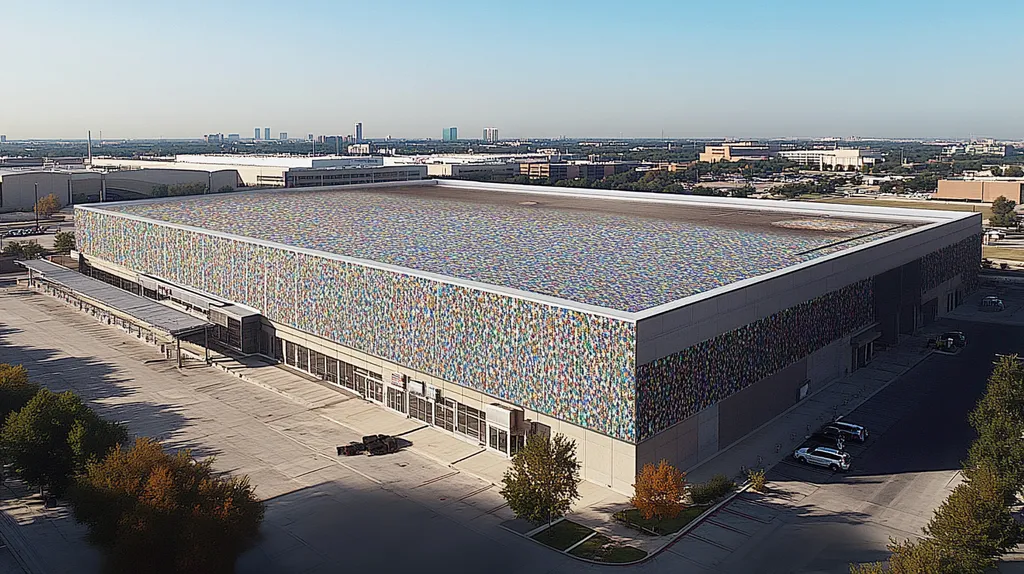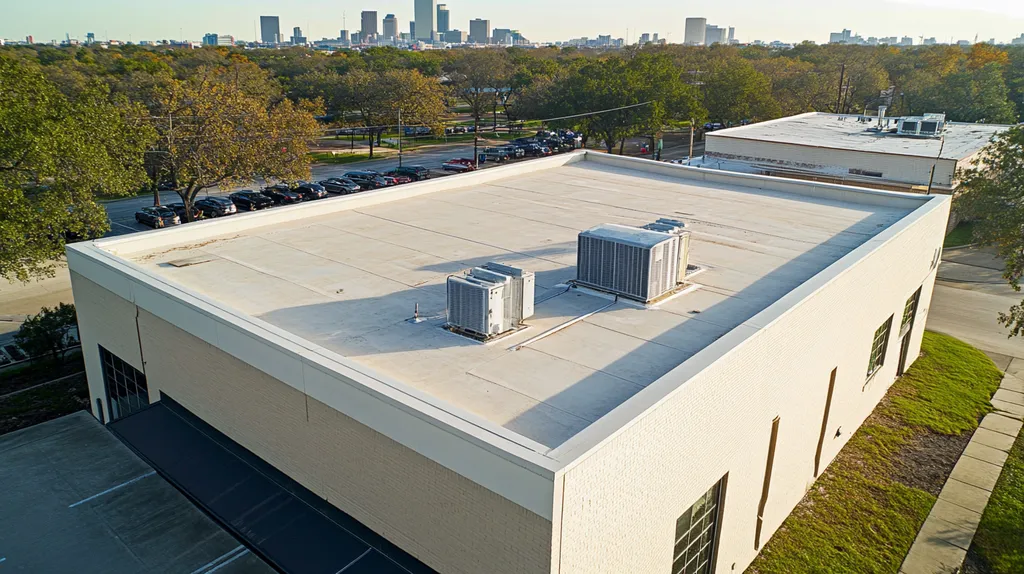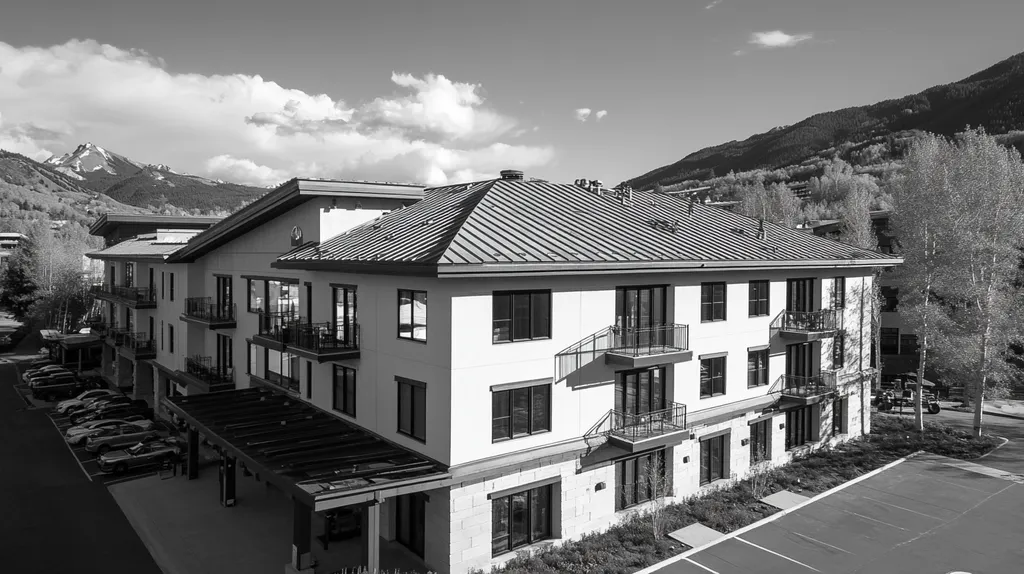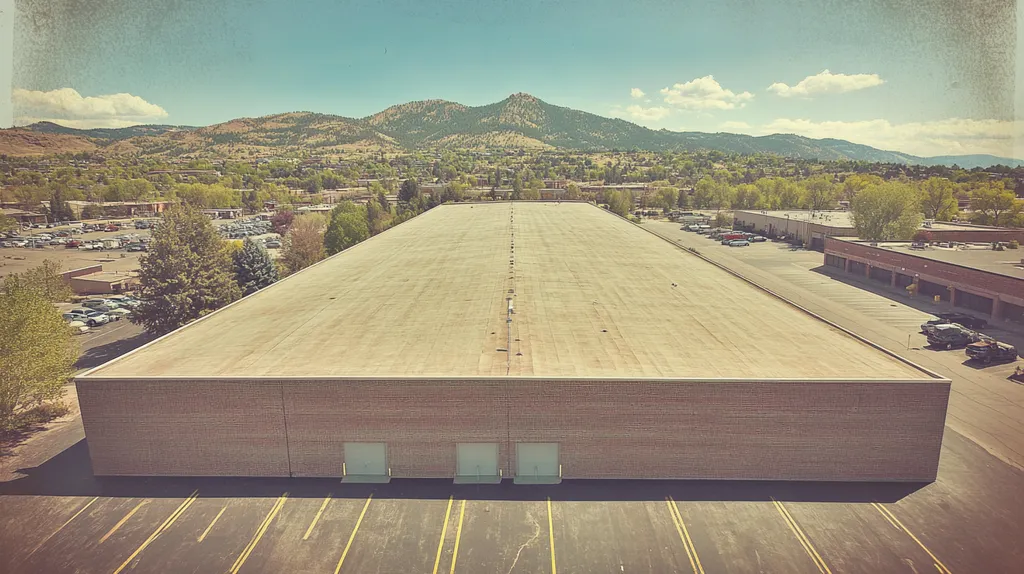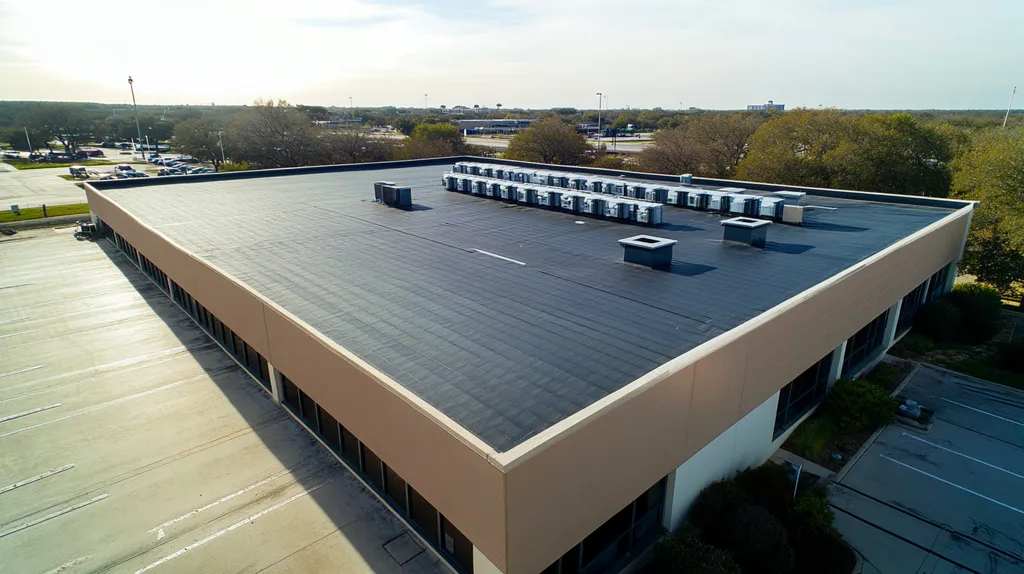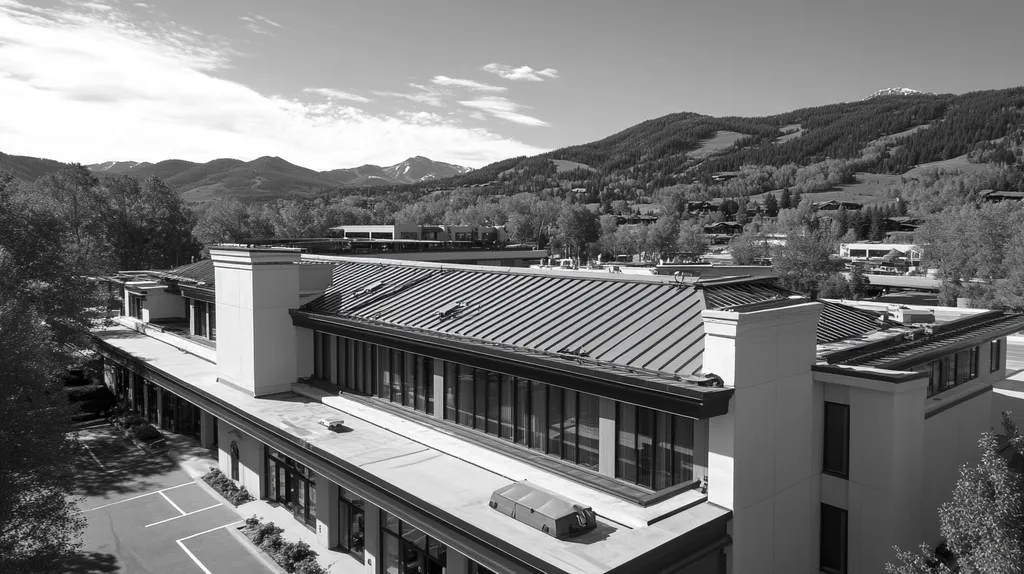Commercial roof failures cost U.S. businesses over $3.5 billion annually, with 85% of these catastrophic events directly linked to inadequate maintenance practices.
Despite these staggering numbers, studies show that 7 out of 10 building owners continue operating under dangerous misconceptions about roof care and maintenance requirements.
From premature system failures to skyrocketing repair costs, the impact of these misunderstandings threatens both property values and business operations across every industry sector.
This comprehensive guide exposes the most costly roofing myths while providing evidence-based solutions that can extend roof life by decades while dramatically reducing maintenance expenses.
SECTION 1: COMMON MISCONCEPTIONS
Commercial roof maintenance remains one of the most misunderstood aspects of building ownership, leading to billions in preventable damage annually. While 85% of commercial roofs fail prematurely due to inadequate maintenance, many owners continue to operate under dangerous assumptions about roof care. Understanding and addressing these misconceptions can dramatically extend roof lifespan, reduce operational costs, and prevent catastrophic failures that can shut down business operations.
Ignoring Roof Maintenance
Between constant exposure to storms, hail, fallen debris, UV radiation, snow, and ice, commercial roofs endure relentless wear throughout the year. No roof, regardless of quality, can withstand these elements indefinitely without proper care. Getting optimal performance at the lowest cost requires biannual inspections and prompt attention to maintenance issues. (source: Hoyt Exteriors)
Most building owners vastly underestimate the relationship between maintenance and repair costs. While annual maintenance typically costs $0.10-0.15 per square foot, emergency repairs often exceed $5-7 per square foot – a difference of nearly 50 times.
Reactive maintenance approaches also create hidden costs through business disruption. A single roof leak can shut down operations, damage inventory, and create liability issues that far exceed the cost of regular inspections.
Misconceptions About Roof Lifespan
Many owners mistakenly treat manufacturer warranties as guaranteed lifespans, failing to understand that these estimates assume proper maintenance. Without regular care, a 20-year roof system may fail in less than 10 years.
Climate conditions dramatically impact actual roof longevity. A roof in Arizona faces different challenges than one in Minnesota, requiring tailored maintenance approaches that account for local weather patterns.
The roof assembly’s complexity also affects lifespan expectations. Modern commercial roofs integrate multiple components – membrane, insulation, flashings, and drainage systems. Failure of any single element can compromise the entire system.
Believing All Roofs Are Equal
Commercial roofing systems vary dramatically in their maintenance requirements. Single-ply membranes like TPO need different care than built-up roofing or metal systems.
Installation methods also create distinct maintenance needs. Mechanically fastened systems face different stress patterns than fully adhered or ballasted roofs, requiring specialized inspection protocols.
Even identical roofing materials perform differently based on building use. A roof over a restaurant kitchen demands more frequent maintenance than one protecting warehouse space due to grease exposure and exhaust systems.
Building geometry creates unique maintenance challenges. Complex roof lines with multiple penetrations require more intensive inspection routines than simple flat expanses.
SECTION 2: PRACTICAL IMPLICATIONS
The consequences of neglecting commercial roof maintenance extend far beyond simple repair costs. Every year, thousands of businesses face disrupted operations, damaged inventory, and compromised building integrity due to preventable roofing issues. With up to 90% of premature roof failures linked to inadequate maintenance, understanding these implications is crucial for protecting both property value and business continuity.
Impact of Neglect on Roof Health
A commercial roof serves as the first line of defense against natural elements, making proper maintenance essential for building protection. Regular care dramatically extends roof lifespan while neglect accelerates deterioration through compounding damage. (source: Hoyt Exteriors)
Minor issues like surface cracks or loose flashings quickly escalate when ignored. What begins as a small leak can spread throughout the roofing system, compromising insulation and creating ideal conditions for mold growth.
Debris accumulation represents another silent threat to roof integrity. Leaves, branches, and sediment block drainage systems, leading to standing water that can add thousands of pounds of unnecessary weight to the structure.
UV exposure and thermal cycling continuously stress roofing materials. Without proper maintenance, these natural processes accelerate membrane degradation and seam separation.
Financial Consequences of Delays
The cost differential between preventative maintenance and emergency repairs is staggering. While routine maintenance typically costs cents per square foot, emergency repairs often exceed $15-20 per square foot when accounting for associated damage.
Water infiltration from neglected roofs creates cascading expenses. Beyond direct repair costs, businesses face inventory damage, equipment replacement, and potential liability from slip-and-fall incidents.
Insurance implications compound these financial impacts. Carriers may deny claims for damage resulting from poor maintenance, leaving owners fully exposed to repair and replacement costs.
The ripple effect extends to property value. Buildings with documented maintenance issues typically sell for 10-15% less than comparable properties with well-maintained roofs.
Effect on Building Operations
Roof failures create immediate operational disruptions. Even minor leaks can force partial shutdowns of manufacturing areas or retail spaces, directly impacting revenue generation.
Environmental control becomes compromised when roofing systems fail. Damaged insulation and air barriers lead to skyrocketing energy costs and unstable interior conditions.
Employee health and safety face increased risks. Moisture infiltration creates slip hazards and can trigger respiratory issues through mold growth in ceiling materials.
Tenant satisfaction plummets when roof issues persist. In competitive markets, this often leads to increased vacancy rates and reduced rental income.
SECTION 3: COST OF MISINFORMATION
Misinformation about commercial roof maintenance creates a staggering financial burden for property owners nationwide. Industry data shows that inadequate or improper maintenance leads to repair costs that are typically 4-5 times higher than necessary. When combined with premature roof failure and increased energy costs, the total impact of maintenance misconceptions costs commercial property owners billions annually.
Economic Burden of Repairs
Commercial roofing maintenance is often incorrectly viewed as an optional expense, leading to devastating repair costs when minor issues escalate into major failures. (source: Hoyt Exteriors)
When small leaks go unaddressed, they typically expand to affect multiple roof components. A single penetration point can compromise insulation, deck structure, and interior systems within months.
Emergency repairs during business hours disrupt operations and typically cost 300-400% more than scheduled maintenance. These urgent fixes often require overtime labor and rush material delivery.
The compounding nature of roof damage means that each delayed repair typically triggers two or three additional repair needs. This cascade effect can turn a $500 maintenance item into a $5,000 emergency repair.
Losses Due to Premature Replacement
Poor maintenance decisions frequently force property owners to replace roofs years before their intended lifespan. A properly maintained commercial roof should last 20-30 years, but neglect can reduce this to just 7-10 years.
Premature replacement costs extend far beyond the new roof itself. Building owners face substantial expenses for tear-off, disposal, and potential structural repairs that could have been avoided.
The timing of replacement often coincides with peak business periods due to emergency failures. This creates additional costs through lost revenue and customer dissatisfaction.
Replacement projects driven by maintenance failures typically cost 25-40% more than planned replacements. These inflated costs stem from rush scheduling, emergency mobilization, and limited contractor options.
Indirect Costs of Inefficiency
Poorly maintained roofs create substantial hidden costs through reduced energy efficiency. Even minor insulation damage can increase heating and cooling expenses by 10-20% annually.
Moisture infiltration from maintenance issues often damages inventory, equipment, and interior finishes. These secondary damages frequently exceed the cost of the roof repairs themselves.
Building value suffers significantly when roof maintenance is neglected. Prospective buyers typically discount purchase offers by 15-25% when they discover deferred maintenance issues.
Insurance premiums often increase when carriers discover patterns of poor maintenance. Some policies may even exclude coverage for damage resulting from neglected maintenance items.
SECTION 4: REALITY CHECK
Commercial roof failures cost US businesses over $2 billion annually in repair and replacement expenses, with 80% of these failures traced to inadequate maintenance. Despite this staggering figure, many property owners continue approaching roof care reactively rather than proactively. Understanding the critical relationship between regular inspections, timely repairs, and weather impacts can mean the difference between a roof lasting decades versus failing prematurely.
Importance of Regular Inspections
Professional roof inspections serve as an early warning system, identifying minor issues before they escalate into major structural problems. These evaluations should occur at minimum twice yearly – typically in spring and fall – with additional checks following severe weather events.
During inspections, technicians examine critical components including membrane seams, flashings, drainage systems, and penetration points. These vulnerable areas account for nearly 95% of all commercial roof leaks when left unchecked.
Documentation from regular inspections provides crucial baseline data for tracking roof performance over time. This historical record helps facility managers identify patterns of wear and anticipate maintenance needs before failures occur.
Professional inspections also satisfy warranty requirements and insurance obligations. Many manufacturers void coverage when owners cannot demonstrate consistent maintenance oversight.
Benefits of Preventative Repairs
Addressing minor issues promptly typically costs 90% less than waiting for problems to escalate. Simple repairs like seam reinforcement or flashing replacement can prevent thousands in water damage when completed early.
Preventative maintenance extends roof lifespan by addressing the root causes of deterioration. Regular servicing of drainage systems prevents ponding water, while prompt sealing of surface damage stops moisture infiltration.
Energy efficiency improves significantly when roofs receive proper maintenance. Even small breaches in the roofing envelope can increase HVAC costs by 15-25% annually.
Well-maintained roofs also protect critical building systems and valuable inventory. A single leak can damage electrical systems, compromise structural elements, and create hazardous conditions for occupants.
Role of Weather in Roof Degradation
Sudden temperature fluctuations, UV exposure, and precipitation patterns continuously challenge commercial roof integrity. These environmental stressors accelerate material breakdown and create points of vulnerability throughout the roofing system. (source: Lynk Pros Roofing)
Freeze-thaw cycles particularly impact roofing materials, causing expansion and contraction that stresses seams and flashings. This thermal movement can create gaps in protective layers within a single season.
Standing water from blocked drainage systems compounds weather-related damage. Just one inch of water adds five pounds per square foot of load to the roof structure.
Regional weather patterns require specialized maintenance approaches. Coastal properties need enhanced corrosion protection, while northern facilities must address snow load and ice dam prevention.
SECTION 5: EVIDENCE-BASED ALTERNATIVES
Commercial roof failures cost U.S. businesses over $5 billion annually, with 85% of these expenses traced to inadequate maintenance strategies. Modern roofing technology and management approaches now offer building owners clear paths to extend roof life while dramatically reducing costs. By implementing data-driven maintenance programs, leveraging advanced monitoring systems, and selecting optimal materials, property owners can transform their roofs from constant liabilities into protected assets.
Implementing Preventative Programs
Commercial property owners and facilities managers must approach roofing maintenance with clear, fact-based strategies to avoid costly misconceptions that drive poor decisions. A structured maintenance program built on regular inspections and documented procedures provides the foundation for protecting roofing investments. (source: Hershey Exteriors)
Effective preventative programs start with baseline roof assessments that map all components, identify vulnerable areas, and establish condition benchmarks. This data enables the creation of customized inspection schedules and maintenance protocols tailored to each roof’s specific needs.
Documentation plays a crucial role in program success. Detailed maintenance records protect warranty coverage while providing trending data that helps predict and prevent failures before they occur.
The most successful programs integrate scheduling software to automate inspection reminders, track completed work, and maintain detailed cost records that demonstrate ROI.
Utilizing Advanced Monitoring Systems
Modern roof monitoring technology has revolutionized how building owners detect and prevent leaks. Wireless moisture sensors placed throughout the roofing system can detect water infiltration long before visible damage occurs.
Automated monitoring systems track key performance metrics including membrane temperatures, drainage flow rates, and structural deflection. This real-time data enables facility teams to address developing issues before they escalate into major repairs.
Integration with building automation systems allows monitoring data to trigger immediate alerts when conditions exceed normal parameters. This early warning capability typically reduces repair costs by 60-80% compared to visual inspection alone.
Cloud-based monitoring platforms provide secure access to roof performance data from any device. This visibility helps facility teams optimize maintenance scheduling and justify budget allocations with hard data.
Choosing the Right Roofing Materials
Material selection dramatically impacts long-term maintenance requirements and costs. Modern single-ply membranes offer superior durability and simpler repairs compared to traditional built-up systems, while requiring less frequent maintenance.
High-performance insulation materials with greater moisture resistance reduce the risk of concealed damage. These materials maintain their R-value longer while providing better protection for the roof deck and building interior.
Advances in protective coatings extend membrane life by up to 10 years while reducing maintenance frequency. UV-resistant formulations prevent premature aging while providing additional waterproofing protection.
Installation method proves as important as material choice. Mechanically-fastened systems typically offer easier maintenance access and simpler repairs compared to fully-adhered alternatives.
SECTION 6: TEST AND VERIFY
Commercial roof failures cost property owners millions annually, yet many continue operating without proper testing and verification protocols. Studies show that buildings implementing systematic testing programs reduce unexpected roofing issues by up to 70% while extending roof life by 5-10 years. Without proper validation, even well-intentioned maintenance efforts can miss critical issues that lead to premature failure.
Using Data to Validate Maintenance
Modern roof assessment technology provides unprecedented insight into system performance. Infrared scanning, electronic leak detection, and core sampling deliver precise data about membrane integrity, insulation condition, and moisture penetration.
Performance metrics from these tests create detailed profiles of roof condition over time. This trending data helps facility managers identify developing issues before they become visible problems.
Digital documentation systems track test results, maintenance records, and repair history in centralized databases. This comprehensive record enables data-driven decisions about maintenance timing and scope.
Cost analysis of testing data typically shows that early problem detection reduces repair expenses by 60-80% compared to visual inspections alone. The return on investment for validation testing often exceeds 300%.
Conducting Regular Roof Assessments
Systematic roof assessments require more than simple visual inspections. A proper evaluation includes core sampling, adhesion testing, and detailed membrane examination using specialized equipment.
Assessment frequency should align with roof age and environmental exposure. New roofs may need only annual testing, while aging systems require quarterly evaluations to catch developing issues.
Testing protocols must account for different roofing materials and assemblies. Single-ply membranes need different validation methods than built-up or modified bitumen systems.
Weather events trigger additional assessment requirements. High winds, hail, or heavy snow loads demand immediate testing to verify system integrity.
Ensuring Compliance with Standards
Industry standards from ASTM International and other organizations define specific testing requirements for commercial roofs. These protocols ensure consistent evaluation across different properties and conditions.
Warranty compliance often requires documented adherence to manufacturer testing guidelines. Failing to maintain proper test records can void coverage for expensive repairs.
Building codes increasingly mandate regular roof testing, especially in regions prone to severe weather. Non-compliance can result in citations and increased insurance premiums.
Testing documentation provides crucial protection in liability cases. Proper records demonstrate due diligence in maintaining safe roof conditions for occupants and visitors.
The Bottom Line
With over $3.5 billion lost annually to preventable roof failures, building owners can no longer afford to operate under outdated maintenance assumptions.
The evidence clearly shows that implementing a structured preventative maintenance program reduces repair costs by up to 80% while potentially doubling roof lifespan.
Advanced monitoring systems, proper material selection, and regular testing protocols transform roofing assets from constant liabilities into protected investments.
The choice facing property owners today is clear: either invest in proven preventative strategies or face the inevitable consequences of system failure, which typically costs 4-5 times more than proper maintenance.
In today’s competitive market, this difference often determines whether a commercial property remains profitable or becomes a financial burden.
FREQUENTLY ASKED QUESTIONS
Q. What are common misconceptions about commercial roofs?
A. Many owners mistakenly believe that roofs perform well without maintenance. In reality, neglect leads to premature failures and expensive repairs. Regular inspections and care are essential to extend the life of the roof and save money.
Q. How does neglecting a commercial roof impact finances?
A. Neglect can lead to significant financial losses, including costly emergency repairs and potential inventory damage. Proper maintenance is far less expensive than the eventual costs of repairs that arise from ignored issues.
Q. What costs are associated with misinformation about commercial roofs?
A. Misconceptions can lead to unnecessary repair expenses that are four to five times higher than needed. Understanding accurate maintenance practices is crucial to avoid escalating repair costs and early roof replacements.
Q. Why are regular inspections critical for commercial roofs?
A. Regular inspections help identify minor issues before they develop into significant problems. These assessments are key for maintaining the roof’s integrity and can prevent costly downtime or repairs due to leaks or deterioration.
Q. What alternative strategies can extend the lifespan of a commercial roof?
A. Utilizing data-driven maintenance programs and advanced monitoring can significantly prolong the lifespan of roofs. Choosing high-quality materials and adopting systematic maintenance plans enhances durability and reduces overall costs.
Q. How can testing improve commercial roof maintenance?
A. Systematic testing identifies hidden issues and provides valuable data about roof conditions. Regular assessments help ensure timely repairs and compliance with industry standards, preventing expensive failures and extending the roof’s service life.
Q. What is the best approach for roof maintenance?
A. The best approach includes regular inspections, documentation of maintenance activities, and prompt repairs of detected issues. An organized maintenance plan can greatly enhance the roof’s lifespan and reduce overall costs associated with unexpected repairs.

